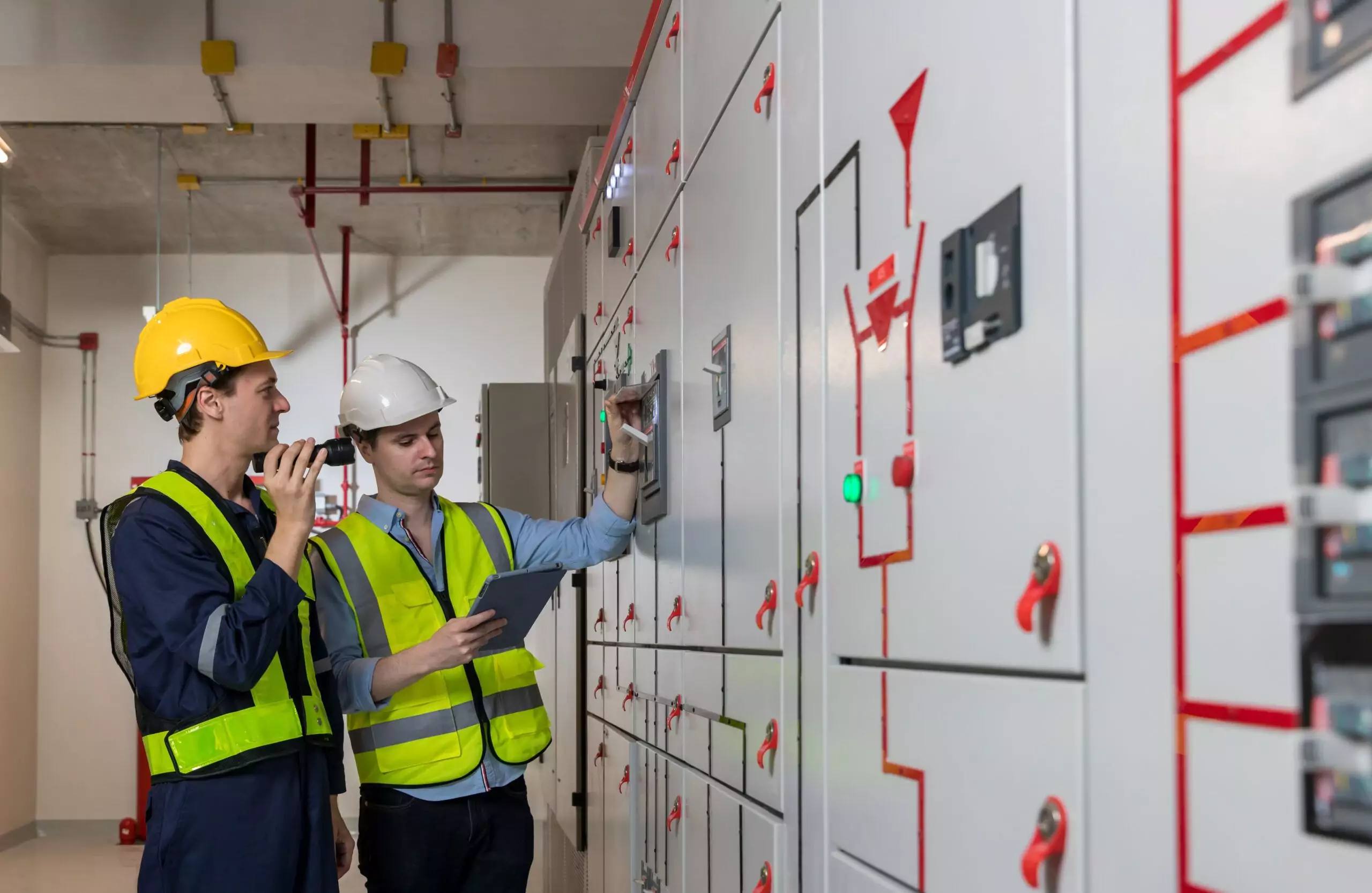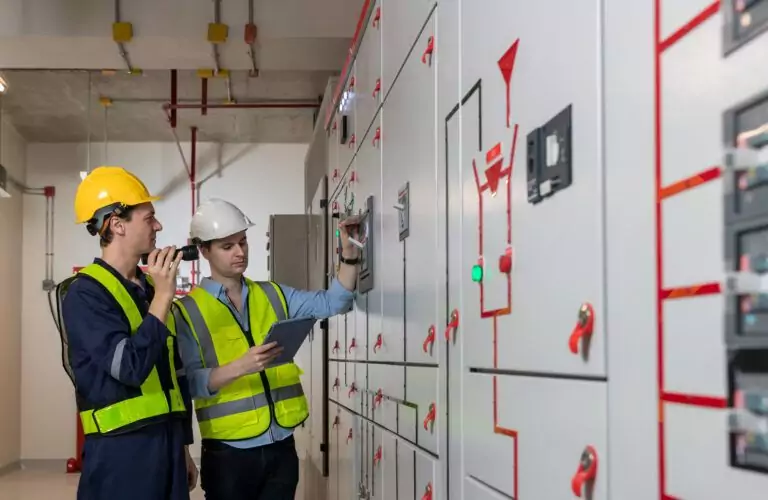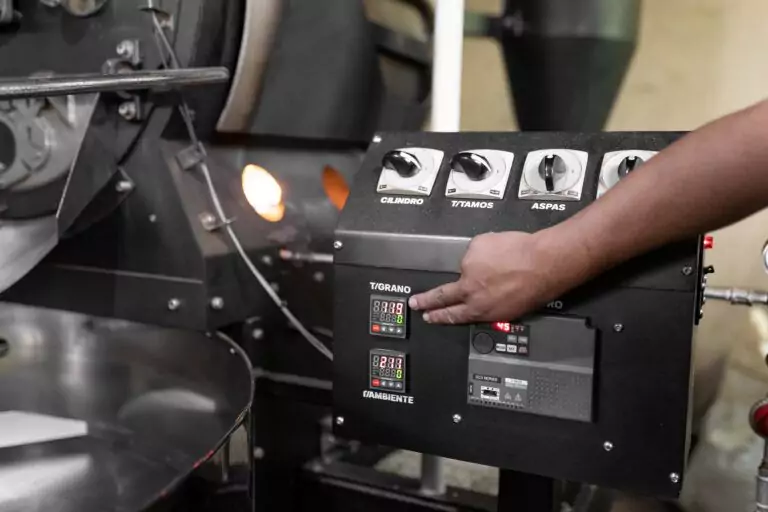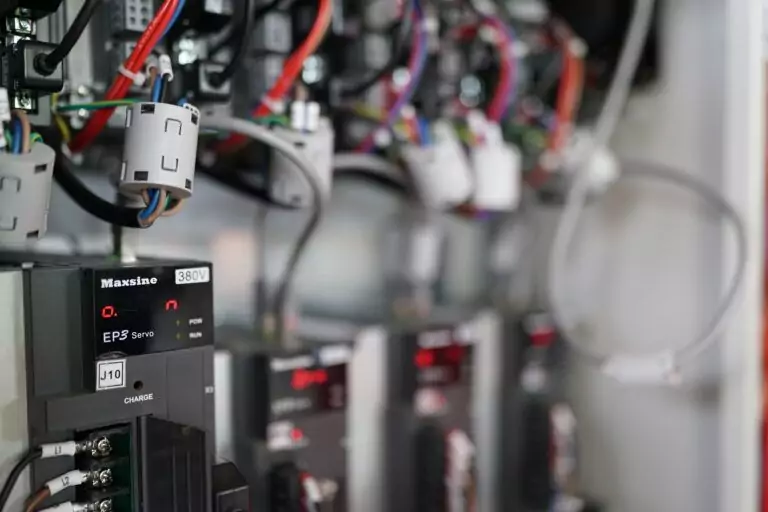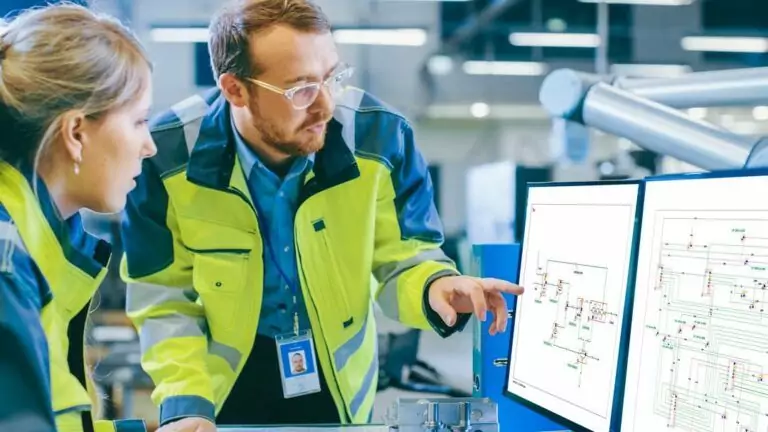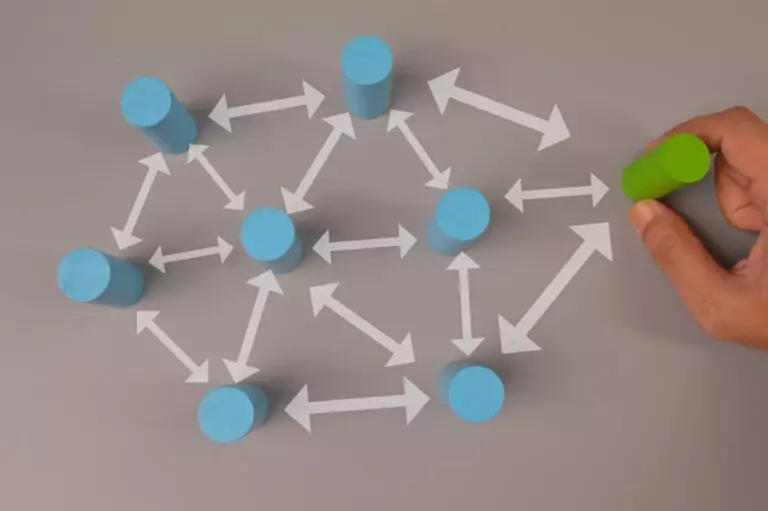Ever wondered what keeps the lights on and machines humming in a bustling factory? For any facility, especially those supported by integrated industrial engineering teams, it starts with a well-designed power layout that ensures consistent and reliable performance. The answer lies in a well-thought-out factory power layout. This intricate dance of cables, transformers, and switchgear is what powers every machine, light bulb, and device in an industrial facility.
But planning such a system is no small feat. It involves a careful balance of efficiency, safety, and foresight to ensure not just the factory’s current needs are met but that it can also grow and adapt to future demands. From assessing power needs to selecting the right distribution system and ensuring safety and compliance, there’s a lot that goes into planning a factory power layout.
Whether you’re looking to design a new system from scratch or optimise an existing one, understanding the basics of factory power layouts is crucial. So, let’s dive into the world of transformers, distribution panels, and all things electrical and explore how to light up a factory in the most efficient way possible.
What is a Factory Power Layout?
A factory power layout refers to the strategic arrangement and distribution of electrical systems within an industrial facility designed to efficiently supply power to various machinery, equipment, and lighting. This layout is crucial for optimising the factory’s operational efficiency, safety, and energy consumption—key goals for any system integration firm tasked with modernizing industrial infrastructure. It encompasses the placement of transformers, distribution panels, cables, and switchgear, ensuring a reliable power supply that meets the factory’s demand without exceeding its capacity.
The layout is meticulously planned to minimise power loss, facilitate maintenance, and accommodate future expansion. Understanding the search intent, individuals looking into factory power layouts are likely seeking information on how to design or improve the electrical infrastructure of industrial sites, aiming for a balance between performance, cost-effectiveness, and compliance with safety standards.
Why is Planning a Factory Power Layout Important?
Planning a factory power layout is essential for ensuring efficient power distribution—a cornerstone of effective electrical engineering strategies that aim to reduce downtime and support scalable growth.
Ensures Efficient Power Distribution
Efficient power distribution is paramount in a factory setting to ensure that all machinery and equipment receive the power they need to operate without overloading the system. This efficiency reduces the risk of downtime and promotes uninterrupted production.
Minimizes Energy Waste
By optimising the power layout, factories can significantly reduce energy consumption. This not only lowers operational costs but also contributes to environmental sustainability by minimising the facility’s carbon footprint.
Enhances Safety and Compliance
A well-planned power layout enhances safety by reducing the risk of electrical hazards, such as short circuits and overloads. It also ensures that the factory adheres to national and local electrical codes, thereby maintaining compliance and avoiding potential legal issues.
What are the Initial Considerations?
When planning a factory power layout, the initial considerations involve assessing power needs to ensure the facility’s demands are met efficiently. This is vital for creating a power layout that supports operational efficiency, safety, and sustainability—priorities well-managed by an integrated engineering consulting company with proven experience in energy-intensive industries.
Assessing Power Needs
Identifying the total power requirements is the first step in planning a factory power layout. This involves calculating both peak and average loads, factoring in all machinery, equipment, lighting, and HVAC systems to ensure the facility’s demands are efficiently met.
Understanding Machinery Placement
Strategic placement of machinery is crucial for optimising workflow and power distribution. This includes matching machinery to power supply requirements, ensuring voltage and phase needs are met, and adhering to safety regulations regarding clearance and access.
Considering Future Expansion
Planning for future expansion involves creating a scalable and flexible power infrastructure. This includes reserving capacity for additional machinery, planning for modular power components, and implementing adjustable wiring solutions to accommodate growth without extensive modifications.
How to Assess the Power Needs?
To accurately assess the power needs of a factory, it’s essential to calculate the total power requirements by considering both peak and average loads. This thorough assessment ensures that the factory’s power layout is both efficient and capable of meeting the facility’s operational demands.
Calculate Total Power Requirements
Determining the total power needs involves aggregating the energy consumption of all operational elements within the factory. This foundational step ensures the power layout can accommodate the facility’s demands.
Include Peak and Average Loads
Incorporating both peak and average power loads into the assessment helps in designing a system that remains stable under varying operational intensities, preventing overloads and ensuring continuous production.
Factor in Machinery and Equipment
A detailed analysis of each piece of machinery and equipment is necessary to understand their specific power requirements. This ensures each component receives adequate power for optimal performance.
Account for Starting Currents
Starting currents, which are significantly higher than running currents, must be considered, especially for heavy machinery. This prevents circuit overload during the machine startup phases.
Consider Lighting and HVAC Systems
Lighting and HVAC systems contribute substantially to the overall power demand. Their inclusion in the power needs assessment is crucial for creating an efficient and comfortable working environment.
Evaluate Energy Efficiency Options
Exploring energy efficiency options, such as LED lighting or energy-efficient motors, can lead to significant operational savings and reduce the factory’s environmental impact.
Factors Influencing Machinery Placement
The placement of machinery within a factory is influenced by several critical factors aimed at optimizing operational efficiency and safety. These considerations form the backbone of a strategic machinery layout, contributing to a well-organized, efficient, and safe manufacturing environment.
Power Supply Requirements
Ensuring that each piece of machinery has access to an adequate power supply is fundamental. This involves planning the layout to accommodate the electrical needs of heavy-duty equipment and prevent power shortages.
Match Voltage and Phase Needs
It’s crucial to align machinery with the factory’s power capabilities, ensuring that voltage and phase requirements are met. This prevents equipment malfunction and extends the lifespan of machinery.
Workflow Efficiency
Optimising the placement of machinery to streamline the production process enhances workflow efficiency. This strategic arrangement reduces unnecessary movement and saves time.
Minimize Distance Between Related Processes
Positioning related machinery and processes close to each other minimises transit times and improves overall production speed. This consideration is key to achieving a lean manufacturing environment.
Safety Regulations
Compliance with safety regulations is essential in machinery placement. This includes maintaining proper clearance around equipment and ensuring easy access for emergency responses and routine maintenance.
Adhere to Clearance and Access Guidelines
Following clearance and access guidelines not only complies with safety standards but also facilitates efficient operations. Adequate space around machinery allows for safe and easy movement of personnel and materials.
Impact of Future Expansion on Planning
Accounting for future expansion in the initial planning stages is critical for ensuring a factory’s power layout remains adaptable and scalable. This approach not only supports the current needs but also secures the facility’s ability to adapt to future demands seamlessly.
Reserve Capacity for Additional Machinery
Reserving additional capacity within the power layout ensures that the factory can accommodate new machinery and equipment without significant modifications, supporting growth and technological upgrades.
Plan for Modular Power Components
Incorporating modular power components into the design allows for easy expansion and customization of the power system, facilitating quick adaptations to meet evolving operational needs.
Flexible Power Distribution Systems
Designing flexible power distribution systems is essential for accommodating changes in machinery layout and production lines, ensuring that power can be efficiently rerouted as necessary.
Implement Adjustable Wiring Solutions
Adjustable wiring solutions, such as movable conduits and plug-and-play connections, provide the versatility needed to reconfigure power distribution with minimal downtime and disruption.
Scalable Electrical Infrastructure
Creating a scalable electrical infrastructure from the outset prepares the facility for future growth, enabling the addition of new power sources and distribution networks without extensive overhaul.
Design for Easy Integration of New Circuits
Planning the power layout with the future in mind includes designing for the easy integration of new circuits ensuring that expanding the electrical system is straightforward and cost-effective.
Steps in Designing a Power Layout
Designing a power layout involves a structured process involving various steps. Each of these steps is guided by the overarching goal of creating a power layout—a specialty area for a leading engineering firm like Vista Projects, known for its structured approach to complex electrical systems.
Create a Detailed Floor Plan
Creating a detailed floor plan is essential, as it lays the groundwork for the entire power layout. It involves mapping out the facility’s space, including the placement of machinery and equipment, to ensure comprehensive coverage by the power distribution system.
Use CAD Software for Precision
Employing CAD software is crucial for achieving precision in the power layout design. This technology allows for accurate, detailed planning and easy modifications, ensuring the power layout meets the exact specifications of the facility.
Position Main Power Sources
Positioning main power sources strategically within the factory is vital for optimizing power distribution efficiency and reliability. This step requires careful consideration of the factory’s layout to ensure optimal placement.
Consider Central and Distributed Sources
A balanced approach between central and distributed power sources enhances the power system’s resilience. Central sources provide a stable backbone, while distributed sources offer flexibility and redundancy, crucial for uninterrupted operation.
Design the Distribution Network
Designing the distribution network is a complex task that involves planning the pathways through which power will be delivered across the facility. This network must be capable of supporting both current and future power demands efficiently.
Plan for Both Primary and Secondary Circuits
Incorporating both primary and secondary circuits in the distribution network design ensures redundancy, enhancing the reliability of the power supply. This planning safeguards against potential outages, maintaining operational continuity.
Selecting the Right Power Distribution System
Selecting the right power distribution system is a critical decision that impacts the efficiency, reliability, and scalability of factory operations. This careful consideration ensures the chosen power distribution system supports the factory’s objectives, maximises operational uptime, and provides a foundation for expansion.
Analyze Power Load Characteristics
Thoroughly analyzing power load characteristics is essential to understand the factory’s energy demands. This analysis helps in designing a system that efficiently meets both current and future requirements.
Distinguish Between Continuous and Intermittent Loads
Identifying the difference between continuous and intermittent loads is crucial for selecting a power distribution system that can handle the dynamic nature of factory operations without compromising on efficiency.
Consider Reliability and Redundancy
Ensuring the power distribution system is reliable and has adequate redundancy is key to maintaining continuous operations. This consideration is vital for minimizing downtime and preventing production losses.
Plan for Backup Power Solutions
Planning for backup power solutions, such as uninterruptible power supplies (UPS) and generators, is essential for safeguarding against power outages. These solutions provide an additional layer of security, ensuring operations can continue even during power failures.
Evaluate Cost and Scalability
Evaluating both the cost and scalability of the power distribution system is important for making a cost-effective choice that also allows for future growth. This evaluation ensures the system is both affordable and capable of adapting to expanding operational needs.
Balance Initial Investment with Future Needs
Balancing the initial investment in the power distribution system with future operational needs is critical. This balance ensures that the system not only meets current demands but is also capable of accommodating future expansion without requiring significant additional investment.
Safety and Compliance Considerations
When designing a factory power layout, prioritizing safety and compliance is paramount. Ensuring compliance and integrating safety features from the outset supports a resilient and efficient manufacturing operation.
National and Local Electrical Codes
Compliance with national and local electrical codes is essential for ensuring the safety and legality of the factory’s power layout. These codes set the minimum requirements for electrical systems to protect against hazards.
Ensure All Designs Meet Current Standards
It is crucial to ensure all designs meet current standards to maintain safety and compliance. Regular updates to electrical codes mean that designs must be periodically reviewed and updated.
Machinery-Specific Power Requirements
Understanding machinery-specific power requirements is vital for the safe and efficient operation of each piece of equipment. This involves consulting the equipment manuals for specifications to ensure the power layout can accommodate these needs without risk.
Consult Equipment Manuals for Specifications
Consulting equipment manuals for specifications provides detailed information on the power needs and safety features of each machine, guiding the design of the power layout to match these requirements.
Emergency Power and Shutdown Systems
Incorporating emergency power and shutdown systems enhances the safety of the factory by ensuring operations can be quickly halted in case of an emergency and that critical systems can continue to function during a power outage.
Include Uninterruptible Power Supplies (UPS) and Emergency Stop Buttons
Including uninterruptible power supplies (UPS) and emergency stop buttons in the power layout design offers a fail-safe mechanism against power interruptions and immediate shutdown capabilities, further safeguarding the facility and its personnel.
Implementing the Planned Power Layout
Implementing the planned power layout is a critical phase that transforms the theoretical design into a functional electrical infrastructure. This careful and methodical approach ensures the successful implementation of the power layout, supporting efficient and safe manufacturing processes.
Coordinate with Electrical Engineers
Coordinating with electrical engineers is crucial to ensure the power layout is implemented according to design specifications and adheres to all safety and compliance standards.
Engage Professionals for High-Risk Installations
For high-risk installations, engaging professionals with specialised expertise is essential to mitigate risks and ensure a safe working environment.
Procure Necessary Equipment and Materials
Procuring necessary equipment and materials that meet the project’s specifications is vital for the successful implementation of the power layout.
Source Quality Components for Reliability
Selecting quality components is key to building a reliable power distribution system that minimises maintenance and maximises uptime.
Follow a Phased Installation Approach
Adopting a phased installation approach allows for incremental testing and adjustments, ensuring each section of the power layout functions correctly before proceeding.
Test Systems at Each Stage for Safety
Testing systems at each stage for safety is imperative to identify and rectify potential issues and ensure the power distribution system is safe for operation.
Best Practices for Maintaining a Power Layout
Maintaining a factory’s power layout is essential for ensuring operational efficiency, safety, and longevity of the electrical infrastructure. The following best practices are instrumental in sustaining a reliable and efficient power layout that supports the factory’s operational needs while prioritising safety and compliance.
Regular Inspection and Testing
Conducting regular inspections and testing is fundamental to identifying and addressing potential electrical issues early, ensuring the power layout remains efficient and safe.
Schedule Annual Checks by Certified Electricians
Annual checks by certified electricians are crucial for verifying the power system’s compliance with safety standards and its operational efficiency.
Updating Layout for New Machinery
Updating the layout for new machinery ensures the power distribution system can accommodate additional loads and maintains its integrity as the factory’s needs evolve.
Reassess Power Distribution for Each Addition
Reassessing power distribution for each addition helps prevent overloads and ensures a balanced load across the system, contributing to its reliability and safety.
Training Staff on Power Safety
Training staff on power safety equips them with the knowledge to safely operate within the facility and respond effectively to electrical emergencies.
Conduct Regular Safety Briefings and Drills
Conducting regular safety briefings and drills reinforces the importance of electrical safety and ensures all personnel are prepared to act in emergency situations, fostering a culture of safety.
Wiring Success Into Your Operations
From assessing power needs and mapping machinery placement to ensuring safety and planning for future growth, designing a factory power layout is all about foresight and precision. It’s a layered process that blends technical know-how with practical planning to deliver efficient, scalable, and compliant energy solutions. With the right approach, you can build an electrical backbone that powers performance and minimizes risk.
At Vista Projects, our integrated engineering services team excels in delivering custom electrical layouts that align with your operational goals and future growth. With deep expertise in industrial environments and a commitment to truth-based engineering, we help you power up with confidence.
Let’s talk about how we can energize your next project—reach out to Vista Projects today.
